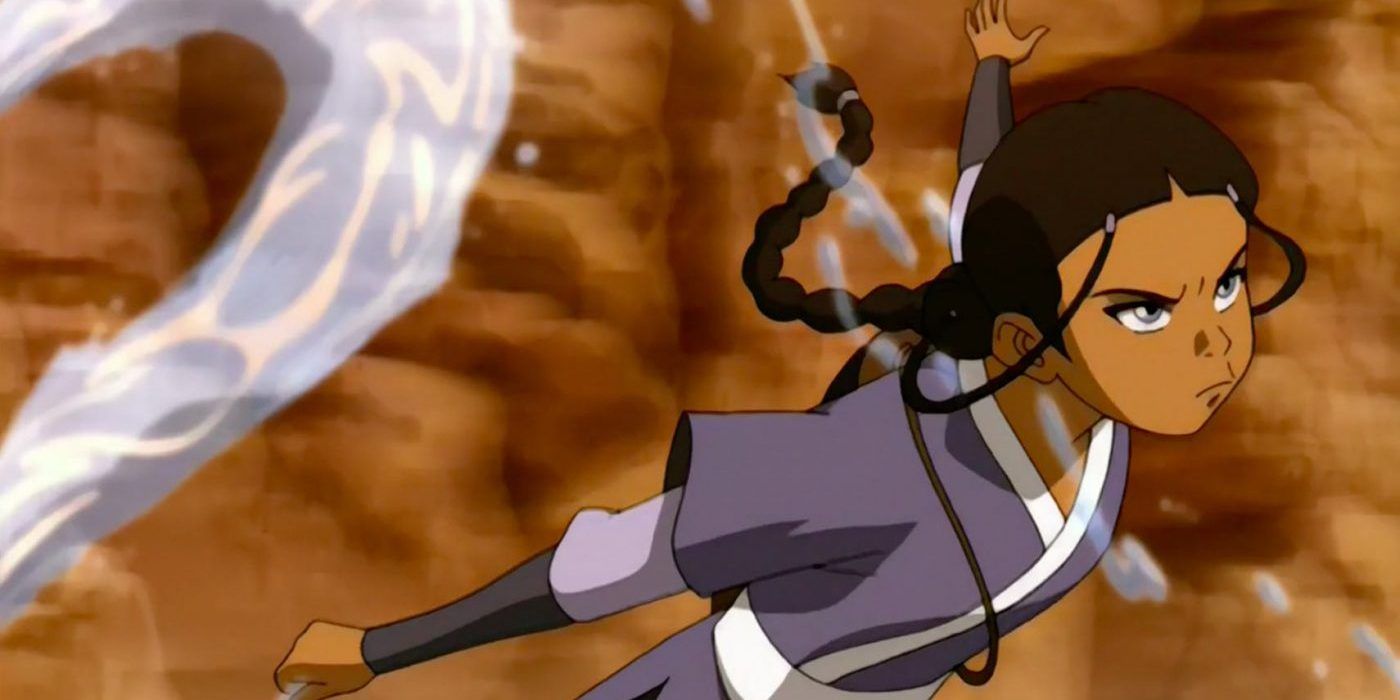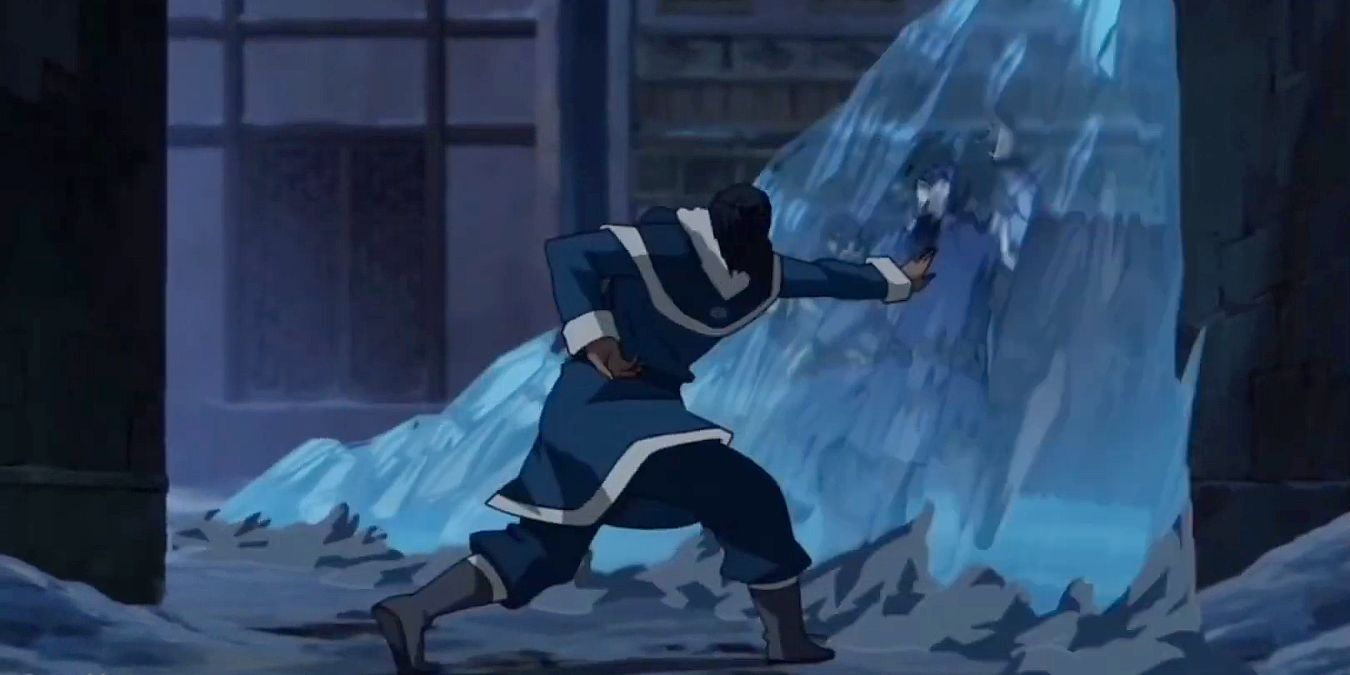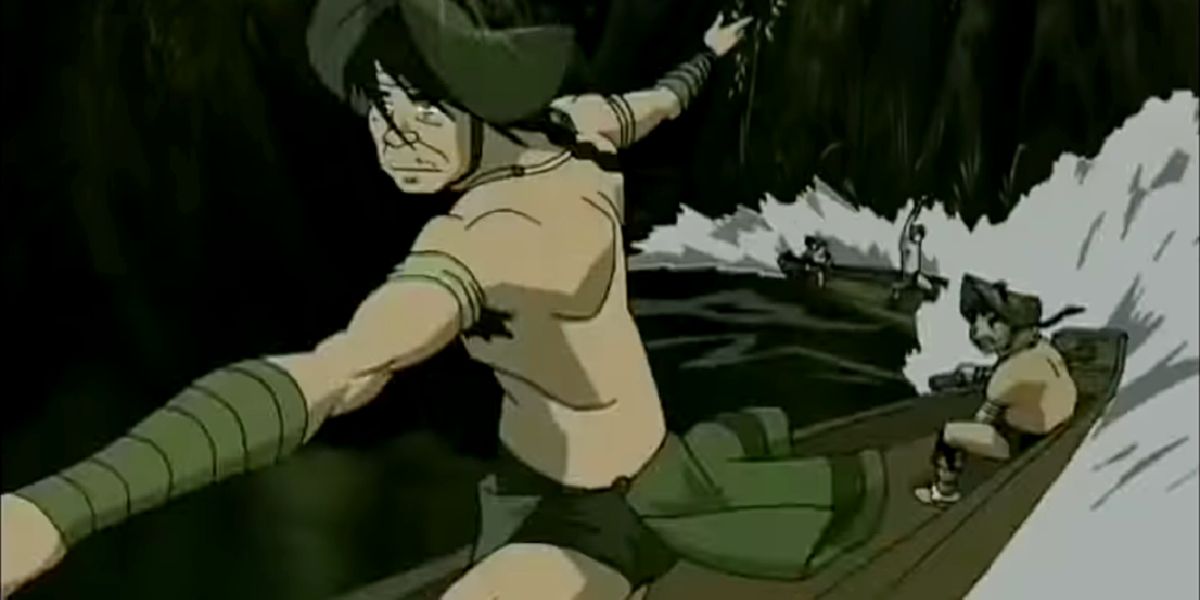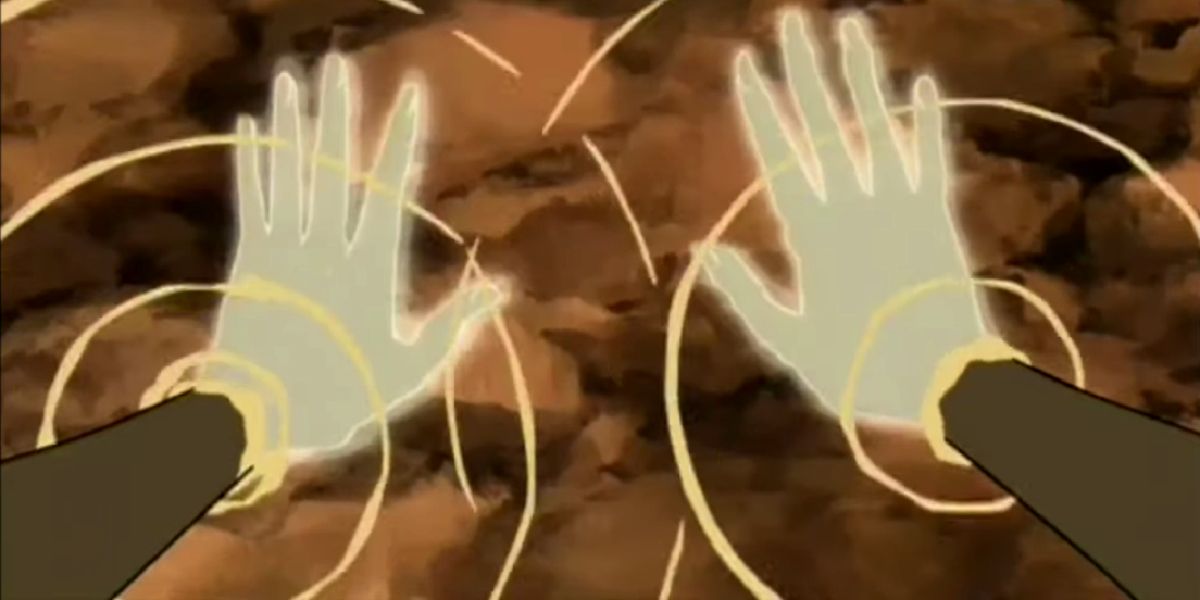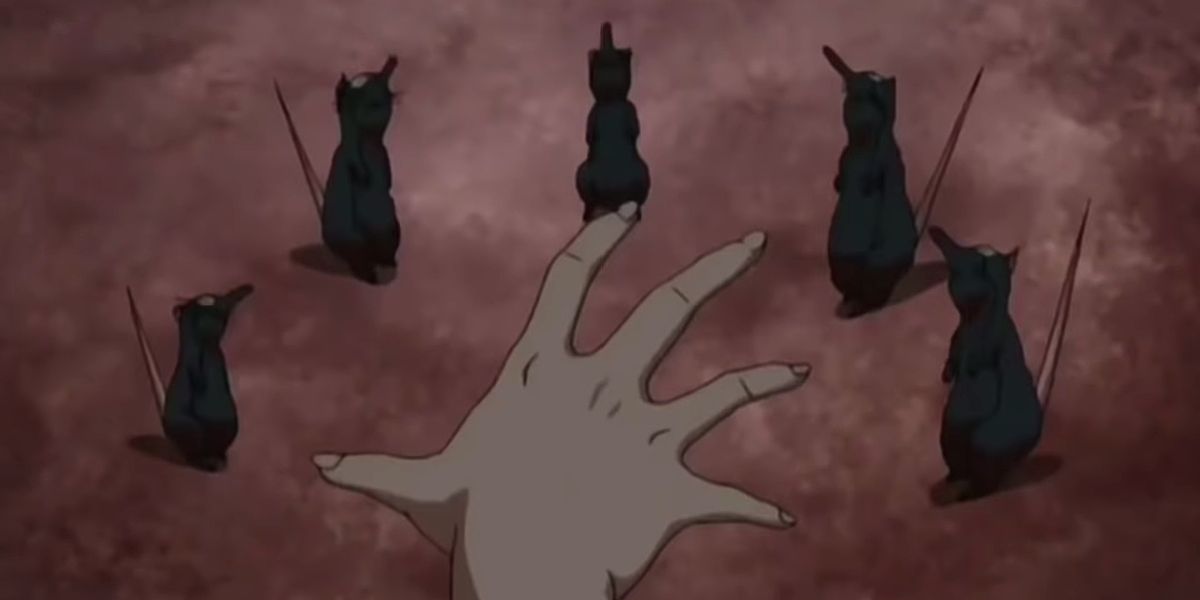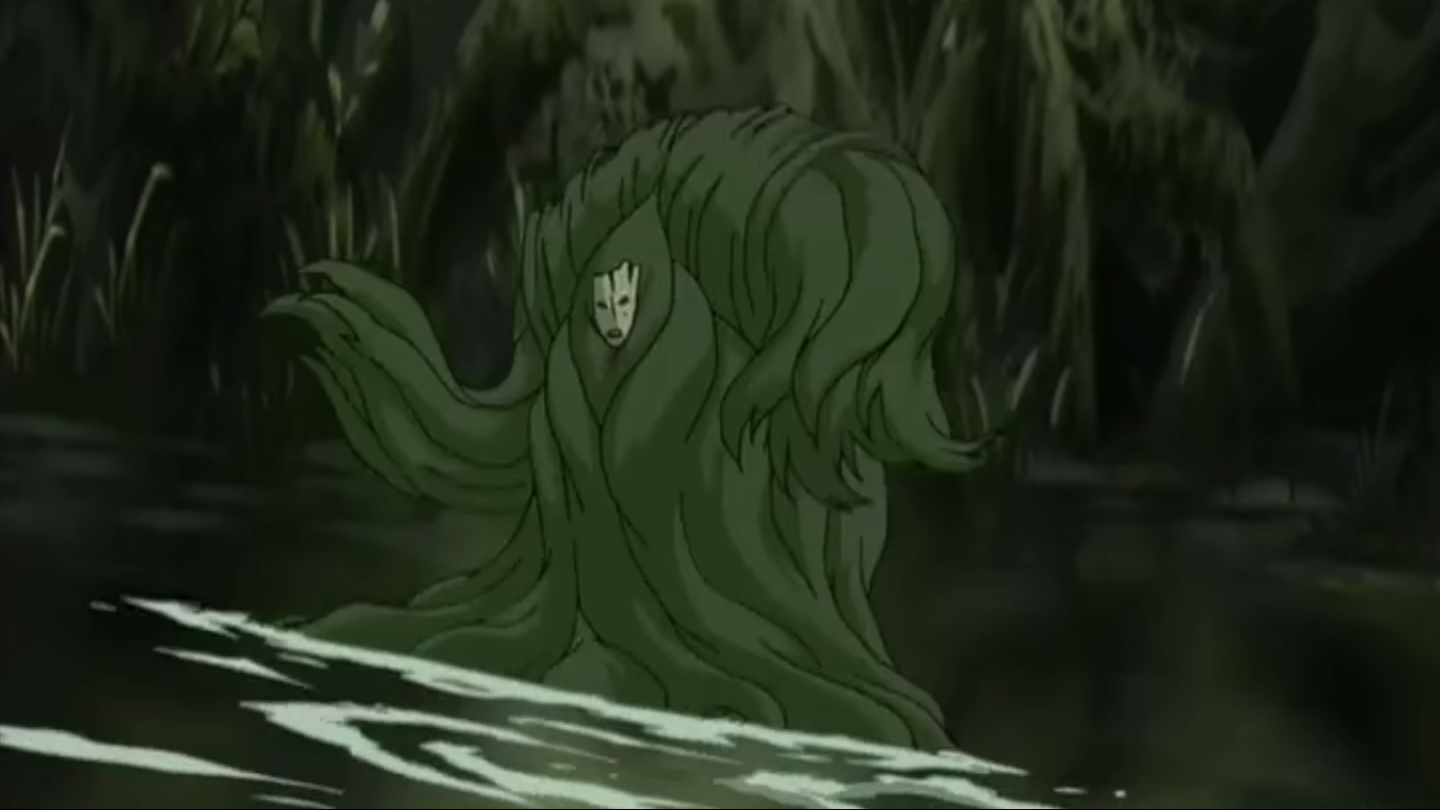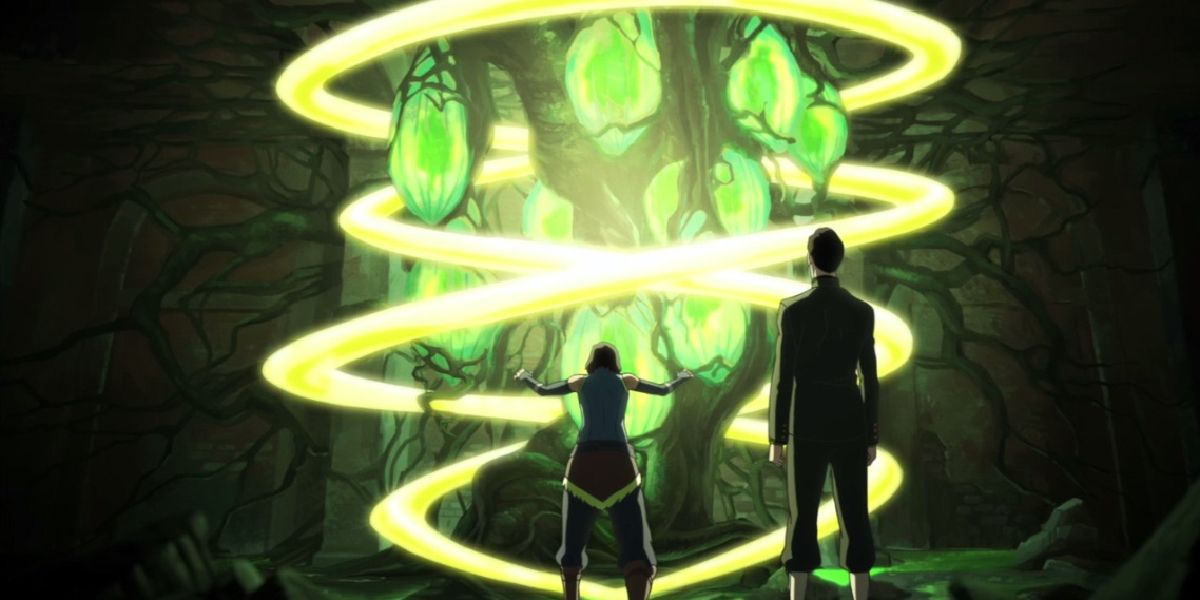In the unique world of Avatar: The Last Airbender and The Legend of Korra, the Water Tribes -- both in the North and South -- and their culture and mannerisms derive inspiration from the Inuit people. Water is the element of change and as such, waterbending has the widest array of bending styles and specialized subsets. Let's dive into all of them.
Waterbending is based on the T'ai chi ch'uan martial arts form and is known for its elegant moves that effortlessly flow into each other. Because water is so adaptable, waterbenders are resourceful and innovative fighters. They can change their defense to offense in the blink of an eye. Iroh, a firebender, even learned how to redirect lightning by watching waterbenders. Unlike the other elements, waterbenders didn't learn their bending from animals; instead, they honed their craft from watching the moon pull and push the tides.
While waterbending doesn't have the pure offensive capabilities of firebending nor the defensive strength of earthbending, water is the most versatile element. Accomplished waterbenders can use water's three phases -- solid, liquid, and gas -- to compensate for any weaknesses. Master waterbenders, like Katara, Korra, and Pakku, use waves of water to overwhelm opponents, ice shields and daggers, and steam to create cover. Although waterbenders are limited by the amount of water they carry, resourceful benders have used sweat, plants, and clouds to augment their fighting capabilities.
Northern and Southern Style
The Northern Water tribe established the first waterbending customs and their forms are graceful and controlled. Northern waterbenders use large waves or walls to overwhelm their opponents and seem to rely on technical skills to win.
When the Southern Water tribe split off from the Northern Water tribe, they changed some of the techniques to suit their unique culture. While there is no canon explanation of the stylistic differences, when watching Katara duel Pakku and Tonraq fight Unalaq, Southern Waterbending seems more aggressive and physical. Katara and Tonraq used their fists to augment their fighting capabilities and relied on fast, brutal attacks while Pakku and Tonraq used more defensive maneuvers.
Foggy Swamp Style
In The Last Airbender, the Gaang encountered waterbenders from the Foggy Swamp Tribe in the Earth Kingdom -- and no one is sure how these laidback waterbenders first emigrated there. Since the Foggy Swamp waterbenders are far removed from their polar counterparts, their style is completely unique to their homeland. These waterbenders use very rigid arm and leg movements in contrast to the Water Tribe's flowing techniques. Also, in a swamp abundant with plant life, Foggy Swamp waterbenders have also figured out how to manipulate plants (explained later) to create some terrifying monstrosities.
Healing
Some particularly skilled waterbenders are born with the ability to use the healing subskill. Waterbending is all about redirecting energy so it makes sense that waterbenders are able to manipulate the energy paths within a person's body. Katara (and the audience) first discover healing when Aang accidentally burns her and she heals her hands by placing them in a pool of water and bending it over the wound. Skilled healers can mend all types of injuries and sicknesses -- even revive those near death with spirit-blessed water.
Bloodbending
With the power to heal also comes the power to hurt. And, once again, water shows its versatility. Bloodbending is one of the most sinister subskills in the Avatar universe. Around 60 percent of the human body is water so it makes sense that an amoral and talented waterbender is able to control them. This awful sub-bending is first displayed by Southern Water Tribe member Hama, who practiced on rats before moving onto her Fire Nation guard.
Waterbenders generally need the power of the full moon to use bloodbending and when they use this technique, they have total control over their victim's body and can easily subdue victims or make them fight others. Judging by the screams elicited, it is an excruciating experience.
Amon from Legend of Korra demonstrates an even more specialized version of bloodbending. The waterbending prodigy is able to bloodbend psychically without the need of the full moon and as a result, he is even a threat to the powerful Avatar. Amon is even able to sever a bender's ties to their chi paths, which completely takes away their bending abilities. It's no wonder that Katara lobbied so hard to outlaw bloodbending as it truly is a horrific skill to have.
Plantbending
One could consider this the soft version of bloodbending as it involves bending the water inside plants to shape them to a waterbender's will. The polar waterbenders don't use this technique as they're surrounded by ice, so we only see the Foggy Swamp waterbenders using plantbending in the series. The sub-bending skill is actually quite useful as plants are plentiful in many parts of the world and are both flexible and tough.
When the Gaang fights against a monster made out of vines, the vines present a formidable challenge as they simultaneously restrain Sokka and swipe at the rest of the group. A fast waterbender can regenerate plants if there are enough resources. Only by cutting the plants at lightning speed can one overpower this technique.
Spiritbending
Legend of Korra brought some changes to the canon and introduced this unique sub-bending skill in Season 2. Spiritbending involves purifying or darkening spirits. While some may think this may fall under airbending, waterbending has always been closer to manipulating the energies of humans and spirits. Unalaq taught Korra this technique when there was spiritual unrest as harmonic convergence drew closer. Spiritbending involves surrounding a spirit with streams of water and then inducing a change in the spirit's positive or negative energies either to purify or corrupt them.

